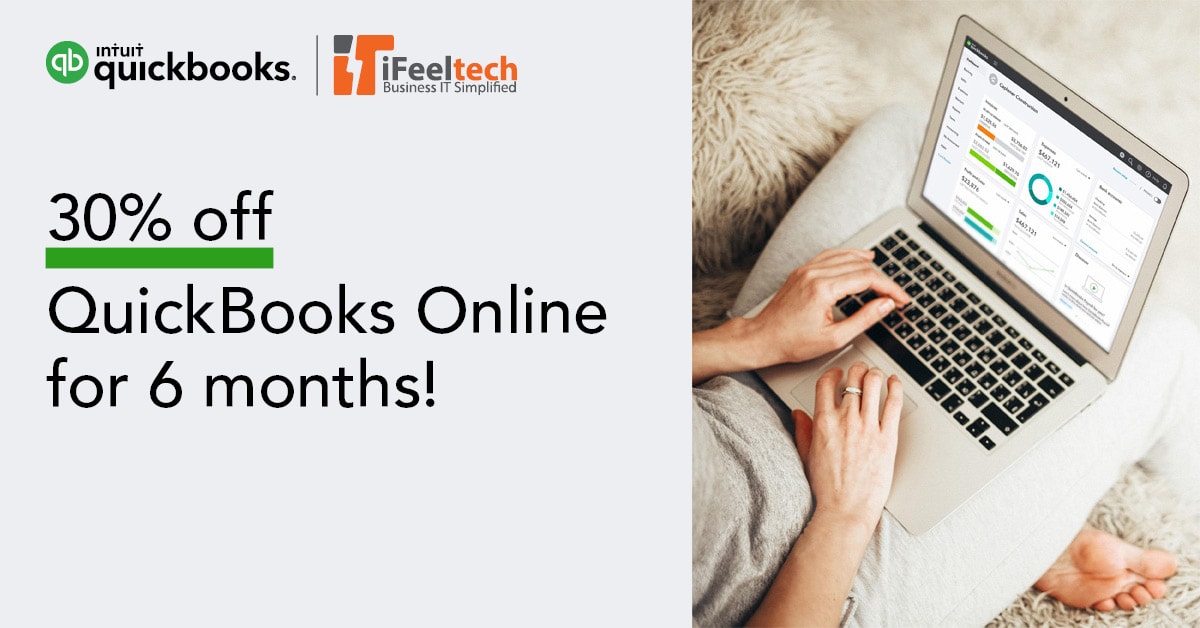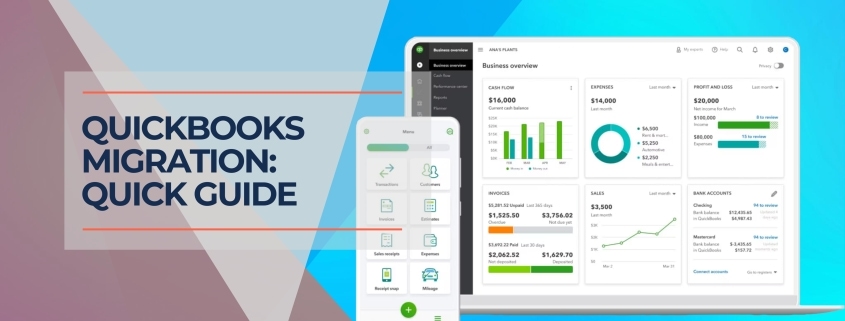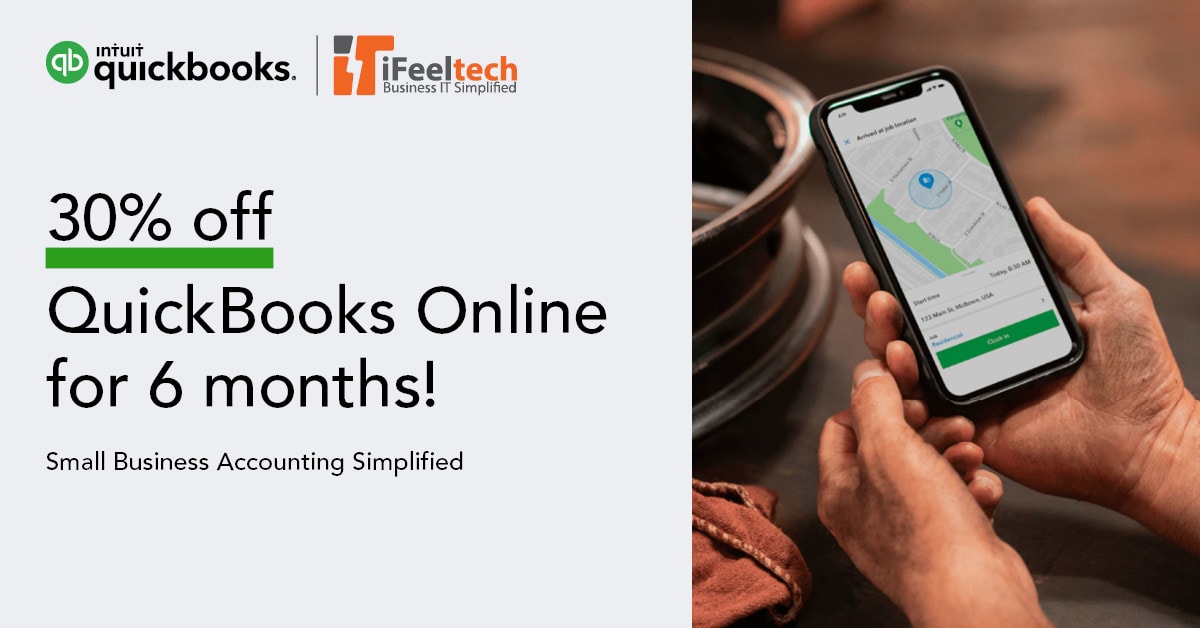QuickBooks Desktop to Online: Your 2024 Migration Guide
Hey there, business owner! Are you considering switching from QuickBooks Desktop to QuickBooks Online? It's a smart move! QuickBooks Online offers many advantages, like accessing your data from anywhere, automatic backups, and a host of new features.
Let's be real for a second – I used to get a little anxious about migrating QuickBooks as an IT consultant. A few years back, it could be a bit unpredictable. Large files or data hiccups could turn a routine migration into a stressful, late-night ordeal. Thankfully, the process is much smoother now, and QuickBooks Online is way more robust than it used to be.
Of course, there are still a few things to consider for a seamless transition from Desktop to Online. Let's dive in and make sure your migration is a breeze!
| Key Takeaway | Why It Matters |
|---|---|
| Plan Strategically | Thorough preparation is crucial for a successful migration. Understand compatibility limitations, optimize your Desktop file, and get the timing right for the smoothest switch. |
| Start with a Fresh QuickBooks Online Account | You'll often get access to special discounts and a streamlined setup when creating a separate QuickBooks Online account specifically for your migration. |
| The Migration Hub is Your Friend | Think of the Migration Hub as your trusty sidekick. It provides valuable guidance and troubleshooting resources throughout the process. |
| Double-Check Everything | After migrating, compare reports meticulously between QuickBooks Desktop and Online to ensure data integrity and catch discrepancies early. |
| Seek Help When Needed | Don't hesitate to contact Intuit Support or a qualified accountant, especially for complex migrations or if you encounter issues. |
Table of Contents
Key Considerations Before Migrating
- Data Compatibility: Heads Up! Not everything from your QuickBooks Desktop file will transfer seamlessly to QuickBooks Online. Some features and data simply work differently in the online version. It's best to check out Intuit's official resources for a full list of what does and doesn't convert. This way, you can strategize beforehand. Check out the official Intuit resource page for more information.
- Subscription Timing: The Clock is Ticking! You have a 60-day window from the day you set up your QuickBooks Online subscription to replace the existing data with your Desktop import. Miss this deadline, and you might need to use different import methods.
- File Preparation: A Little Cleanup Goes a Long Way! Take some time to optimize your QuickBooks Desktop file before migrating. Correct any errors, reconcile your accounts, and get things nice and tidy. This will greatly reduce the chance of hiccups during the move.
Step-by-Step Migration Process
- Create a Separate QuickBooks Online Account
- Important Note: Before starting the migration process, create a separate QuickBooks Online account. You might even be eligible for a special discount when switching from Desktop! Learn more about switching discounts.
- Prepare Your Desktop File
- Update Time: Make sure you have the latest version of QuickBooks Desktop installed. This will help smooth out the transfer process.
- Safety First: Create a backup copy of your QuickBooks Desktop file – just in case!
- Initiate the Migration from QuickBooks Desktop
- Keyboard Shortcut: Within QuickBooks Desktop, hit these keys in order: Ctrl + 1, then Ctrl + B + Q, and finally click OK. This will open the migration window.
- Follow the Guide: QuickBooks will walk you through the initial steps with on-screen instructions. Select “Export Company File to QuickBooks Online.”
- Choose Data to Import
- Full Monty or Selective? You can transfer everything from your Desktop file or handpick specific data. If your file is huge, picking the essentials might speed things up.
- Manage Your Inventory: If you track inventory, you'll need to decide how you want to transfer it. Carefully choose the date to start tracking. Consider using the FIFO inventory valuation method—if you're unsure, consulting an accountant is a wise move.
- Connect to Your QuickBooks Online Account
- Secure Login: It's time to sign in to your newly created QuickBooks Online account. There might be additional security steps, like entering a code sent to your phone.
- Select Destination Company:
- New or Existing? Here's where you choose whether to import your data into a brand new QuickBooks Online company or replace the data in an existing one.
- Important: You can only replace a company's existing data during the first 60 days of your QuickBooks Online subscription.
- Wait for the Import to Complete:
- Patience is Key: Depending on the size of your file, the migration could take a little while. Kick back and relax! You'll get an email notification when it's all done.
Post-Migration Checklist
- Migration Hub: After migrating, check out QuickBooks Online's Migration Hub. Consider it your migration control center, offering guidance and troubleshooting resources.
- Double-Checking Your Work: Run the same reports (like your Profit & Loss and Balance Sheet) in both QuickBooks Desktop and QuickBooks Online. Compare the numbers side-by-side to spot any differences.
- Seeking Professional Help: If you notice discrepancies or your setup is particularly complex, don't hesitate to work with an accountant. They'll help make sure everything balances out for smooth sailing.
- Exploring New Features: Now's the fun part! Take some time to familiarize yourself with QuickBooks Online's interface, new features, and all the tools you have available.
Troubleshooting and Tips
- Intuit Support: Your Backup Plan: If you're stuck, don't sweat it! Contact Intuit's Support team directly through Intuit's Support. They can provide expert assistance and guide you through any challenges.
- Professional Assistance: For those with complex migrations or if you run into major issues, consider enlisting the help of an accountant or a specialized QuickBooks expert. They can offer invaluable guidance and ensure a smooth transition.
Extra Tips for a Seamless Transition
- Limitations: Be Aware! Remember, not all items from QuickBooks Desktop will migrate to Online. Familiarize yourself with the full list well in advance. This preparation helps you plan for alternative solutions or manual adjustments if needed.
- Add-on Compatibility: If you rely on any add-ons for QuickBooks Desktop, double-check if they're also available for QuickBooks Online or if you'll need to find suitable replacements. Compatibility is key to maintaining your workflow and productivity.
- Learn and Adapt: QuickBooks Online offers a wealth of helpful tutorials and resources. Use these to get accustomed to the new environment, explore new features, and optimize your use of the platform.
Case Study: When the Condense Data Utility Saves the Day
About a year ago, iFeelTech was tasked with helping a large e-commerce company move to QuickBooks Online. Their QuickBooks Desktop file had grown significantly due to over ten years of transactions, reaching a 4GB file size. This was causing performance issues and hindering their migration process. Before switching them to QuickBooks Online, we needed to streamline their data using QuickBooks Desktop's Condense Data Utility.
Understanding the Condense Data Utility
This utility is a valuable tool for those who use QuickBooks. It helps optimize QuickBooks Desktop files by removing older transactions and streamlining data. Here's how it works:
- Data Removal: The utility can selectively remove transaction details, preserving summarized journal entries to reduce file size significantly.
- Improving Performance: A smaller QuickBooks Desktop file often leads to faster performance and fewer errors, which is crucial for businesses that need to move from QuickBooks Desktop.
Important Considerations:
- Irreversible: Once you condense, the process can't be undone. Always make a backup!
- Limited Impact: It won't remove open transactions or fix data damage.
Our Condense Data Success Story
For the e-commerce company, we collaborated with their accountant to strategically select transaction data to condense. This careful approach allowed us to reduce their file size to a more manageable 1GB. Optimizing their chart of accounts in this way paved the way for a successful 2024 migration to QuickBooks Online.
When to Consider Condensing Data
Here are some common scenarios where the Condense Data Utility might be helpful when using QuickBooks:
- Large Files: Overly large files can create issues for businesses using QuickBooks Desktop.
- Performance Issues: If you're experiencing lag or errors due to file size.
- List Limits: When you're approaching maximum list limits in QuickBooks Desktop.
- Migration Prep: Condensing data before migrating from desktop file to QuickBooks Online can streamline the process, especially if you’re considering upgrading to QuickBooks Enterprise.
Important: Always consult an accountant or QuickBooks expert before using the Condense Data Utility. Remember, it can impact your historical financial records, so ensuring accurate data from QuickBooks is crucial.

Conclusion
Migrating to QuickBooks Online opens up a whole new set of possibilities for your business. You'll enjoy the flexibility of the cloud, improved features, and the peace of mind that comes with automatic backups. By carefully planning your migration, following the steps outlined, and understanding the potential challenges, you can ensure a smooth and successful transition to a more versatile and powerful accounting solution.
A Note from iFeelTech
At iFeelTech, we've guided numerous businesses through migrating to QuickBooks Online (QBO). Over the years, we've witnessed firsthand the significant improvements in QBO. While migrations used to be more complex, the process is much smoother now. Today, most of our clients significantly benefit from and prefer the convenience and enhanced features offered by the Online version.
FAQ: Migrating from QuickBooks Desktop to QuickBooks Online
Are there any special offers for switching from QuickBooks Desktop to Online?
Yes! Often, you can find discounts or promotional offers when migrating from your desktop. This might include a reduced monthly subscription price for a certain period. Check for current offers before setting up your QuickBooks Online account.
Will all of my QuickBooks Desktop data transfer seamlessly to Online?
Unfortunately, not everything transfers perfectly. Some features, like memorized transactions or budgets, don't have direct equivalents in QuickBooks Online. Be sure to carefully review Intuit's official list of what does and doesn't convert to avoid surprises.
I have a lot of inventory data in QuickBooks Desktop. How does that transfer?
Inventory migration requires careful planning. You'll need to choose a starting date to track inventory in QuickBooks Online. Consulting with an accountant can help you determine the best approach and ensure accurate inventory valuation.
Is there a deadline for migrating my data to a new QuickBooks Online account?
Yes. You have 60 days after setting up your QuickBooks Online account to replace existing company data with your Desktop file directly. After that, other import methods might be needed.
What if I run into problems during the migration?
Don't panic! First, tap into the resources of the QuickBooks Online Migration Hub. Intuit also has a dedicated support team you can contact for help. Consider getting assistance from an accountant or QuickBooks expert for more complex issues.
Will I still be able to access my QuickBooks Desktop file after the migration?
Definitely! Your QuickBooks Desktop company file remains intact and accessible even after completing the migration process.
Can I migrate to QuickBooks Online from any Desktop version?
While older versions might work, installing the latest version of QuickBooks Desktop is strongly recommended. This ensures the smoothest possible transfer and compatibility with QuickBooks Online.





Leave a Reply
Want to join the discussion?Feel free to contribute!